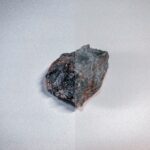Welcome to an exciting journey through the fascinating world of fossils! In this article, we will explore intriguing facts about fossils specifically curated for Year 3 students. As a skilled and knowledgeable science educator, my aim is to captivate young minds and ignite their curiosity about these remnants of Earth’s ancient past. Through interactive activities, engaging explanations, and a sprinkle of fun, we will delve into the significance of fossils in reconstructing history and understanding evolution. Get ready to embark on an educational adventure that will leave you in awe of the wonders that lie beneath our feet!
Facts About Fossils For Year 3
Welcome to the fascinating world of fossils! Today, we are going to embark on a thrilling journey through time to discover some incredible facts about fossils. By the end of this article, you’ll be equipped with a treasure trove of knowledge about these ancient remnants of life.
So, what exactly are fossils? Fossils are the preserved remains or traces of dead organisms that provide us with valuable insights into the Earth’s history and the evolution of life. They can range from dinosaur bones to fossilized footprints and even fossilized feces! Yes, you heard that right! Fossils are like time capsules that allow us to peek into the past and unravel the mysteries of prehistoric life.
Now, let’s dig deeper into some key facts about fossils. Did you know that fossils can be over 10,000 years old? Some fossils are even millions or billions of years old! Just imagine holding a piece of history that dates back to a time long before our modern world existed. It’s like having a superpower that allows you to travel through time without leaving your classroom!
You may be wondering, how do fossils form? Well, usually when plants or animals die, they decay or get eaten. But under certain special conditions, they can become fossilized. Think of it as nature’s way of creating a snapshot of the past. Fossils can be formed when an organism is buried quickly by sediment, like sand or mud. Over time, the layers of sediment compress the remains, turning them into rocks and preserving them for us to discover millions of years later.
Now, let’s talk about the different types of fossils. Body fossils are the remains of ancient life, such as skeletons and shells. These fossils give us a direct glimpse into what extinct organisms looked like. On the other hand, trace fossils are impressions or footprints left behind by ancient creatures. These fossils can reveal fascinating information about their behavior and movement. Just imagine finding a fossilized footprint of a dinosaur and picturing how it walked millions of years ago!
The study of fossils is called paleontology. Paleontologists are like detectives who carefully examine these ancient relics to understand how life evolved and how the Earth has changed over time. By studying fossils, we can reconstruct entire ecosystems and gain a better understanding of the history of our planet.
Now, let’s explore some interesting fossil facts that are sure to amaze you. Did you know that dinosaur fossils have been discovered all over the world? From towering T. rexes to gentle plant-eaters like Triceratops, these colossal creatures roamed the Earth millions of years ago. Imagine the excitement of unearthing a dinosaur bone and realizing you’re holding a piece of a majestic creature that once ruled the land!
But wait, there’s more! Fossilized feces, also known as coprolites, have also been found. These petrified poops provide valuable information about what ancient animals ate and how their digestive systems worked. It might sound a bit gross, but you’d be amazed at how much we can learn from such unusual fossils!
To sum it all up, fossils are like windows into the past. They help scientists piece together the puzzle of ancient life and the history of our planet. From dinosaurs to coprolites, every fossil tells a unique story and offers a glimpse into a world long gone.
So, Year 3 students, are you ready to uncover the secrets of the past? Get ready for an extraordinary adventure that will ignite your curiosity and bring history to life right before your eyes. Let’s dive into the marvelous world of fossils and unlock the mysteries of our ancient Earth together!
“Fossils are like windows into the past, helping us piece together the puzzle of ancient life and the history of our planet.”
Fossils have always fascinated mankind, unveiling secrets of the past and providing invaluable insights into the evolution of life on Earth. If you are eager to dive into the world of fossils and uncover their captivating stories, we have compiled an intriguing collection of facts about fossils. From the mysterious ancient creatures preserved in amber to the awe-inspiring dinosaur remains found in excavation sites, there is so much to discover. So, grab your explorer’s hat and click here to embark on a thrilling adventure through the fascinating world of fossils: facts about fossils.
Facts About Fossils For Year 3
Did you know that fossils hold intriguing stories about our planet’s history? Dive into the fascinating world of fossils for year 3 learners and uncover a wealth of knowledge awaiting you. Explore the wonders of fossils by discovering how they are preserved through various methods. From fossil preservation methods like sedimentation to the interesting techniques used to uncover their secrets, there is so much to learn. Delve into the subject of fossils for year 3 and expand your understanding of our Earth’s ancient past. Discover all there is to know about fossils for year 3 at our website: Fossils for Year 3. Unlock the mysteries of fossil preservation methods and embark on an exciting journey of discovery: Fossil Preservation Methods. So, what are you waiting for? Click the links to dive into an enchanting world of fossils and expand your knowledge today!
FAQ
Question 1: What are fossils?
Answer 1: Fossils are the preserved remains or traces of dead organisms. They provide evidence for how living things and the environment have changed over time.
Question 2: How old can fossils be?
Answer 2: Fossils can be over 10,000 years old, with some being millions or even billions of years old.
Question 3: How do fossils form?
Answer 3: Normally, plants and animals decay after death or are eaten. However, under certain conditions, they can become fossilized.
Question 4: What types of fossils are there?
Answer 4: Fossils can include body fossils, which are remains of ancient life such as skeletons and shells, as well as trace fossils, which are impressions or footprints.
Question 5: Why are fossils important?
Answer 5: Fossils are valuable in helping scientists understand prehistoric life and the history of Earth. They play a crucial role in reconstructing history and understanding evolution.
json
{
"@context": "https://schema.org",
"@type": "FAQPage",
"mainEntity": [
{
"@type": "Question",
"name": "What are fossils?",
"acceptedAnswer": {
"@type": "Answer",
"text": "Fossils are the preserved remains or traces of dead organisms. They provide evidence for how living things and the environment have changed over time."
}
},
{
"@type": "Question",
"name": "How old can fossils be?",
"acceptedAnswer": {
"@type": "Answer",
"text": "Fossils can be over 10,000 years old, with some being millions or even billions of years old."
}
},
{
"@type": "Question",
"name": "How do fossils form?",
"acceptedAnswer": {
"@type": "Answer",
"text": "Normally, plants and animals decay after death or are eaten. However, under certain conditions, they can become fossilized."
}
},
{
"@type": "Question",
"name": "What types of fossils are there?",
"acceptedAnswer": {
"@type": "Answer",
"text": "Fossils can include body fossils, which are remains of ancient life such as skeletons and shells, as well as trace fossils, which are impressions or footprints."
}
},
{
"@type": "Question",
"name": "Why are fossils important?",
"acceptedAnswer": {
"@type": "Answer",
"text": "Fossils are valuable in helping scientists understand prehistoric life and the history of Earth. They play a crucial role in reconstructing history and understanding evolution."
}
}
]
}
- Crypto Quotes’ Red Flags: Avoid Costly Mistakes - June 30, 2025
- Unlock Inspirational Crypto Quotes: Future Predictions - June 30, 2025
- Famous Bitcoin Quotes: A Deep Dive into Crypto’s History - June 30, 2025
















